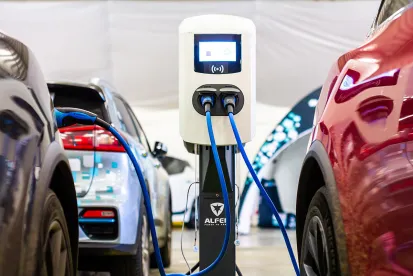All the signs point to an impending perfect storm in the automotive industry and the impact on innovation will be great. We have seen technological revolutions before; a new technology more than just disrupts, it can change a whole sector of industry that, up to that point, had been pervasive and irreplaceable for decades - and it does it in just a matter of years. A recent examples of such a tech revolution was the LED lighting revolution in which LED lighting products not only replaced the vast majority of CFL, HID, halogen, and fluorescent lighting products worldwide, but also turned off the incandescent bulb that has defined our lighting since the days of Thomas Edison. Such a drastic change would have been unthinkable just a decade earlier, but those closer to the industry saw the signs before the rest of us.
The same signs now appear in the automotive industry and we might shortly witness a global replacement of the gasoline engine vehicle that has been around for over 100 years with an electric vehicle – and this change could happen within a decade. Numerous signs of growing dissatisfaction with the incumbent technology leading to a tech revolution are present now and mirror the LED revolution:
-
The incandescent bulb became undesirable because it consumed too much electricity and produced too much heat - so too gasoline vehicles have become increasingly undesirable due to the pollution they cause and the unpredictability of gasoline prices.
-
The government promoted LED lighting with financial incentives, including through the Energy Independence and Security Act of 2007 - so too the government incentives and rebates for electric vehicles make EVs more attractive to the consumers, including the latest U.S. Department of Transportation $7.5B Toolkit for electric vehicle charging infrastructure in rural communities.
-
Large businesses in the early 2010’s, such as restaurants, stores, and coffeehouse chains were willing to adopt LEDs on a large scale - so too large ride-hailing companies and car rental companies are increasingly showing interest in buying EVs at a large scale.
-
The price gap between LED lighting bulbs and traditional incandescent bulbs was initially too high, but then shrank to the point where consumers gave the LED bulb a try – so too the price gap between gasoline vehicles and EVs today is eroding and total cost of ownership is expected to keep shrinking.
The only thing that was missing, until recently, was the global socio-political event to trigger the revolution. The ongoing security issues and the risks due to dependence on oil in the post-9/11 world (hence the “Energy Independence and Security Act of 2007”) continue to today and have been exacerbated by the conflict in Ukraine which sent shockwaves through the gas and gasoline markets, reminding the government and the consumers once again that switching to non-gasoline alternatives may no longer be too expensive to try.
And here we are.
EV automotive leaders are coming up with new EV models almost monthly and constant progress is being made to increase mass production in the new EV factories. The writing is on the wall.
But how will this impact the innovation in the electric vehicle field? Judging by prior tech revolutions, probably very positively. Although the EVs technically work and the foundational battery and electric motor technology may be developed, significantly greater innovation is needed to realize mass market EV adoption and improve the consumer experience in every way. For example, wireless charging would allow users to effortlessly charge their EVs and could make the charging process entirely transparent. Also, as EV acceptance grows, so too will the demand for more efficient EV manufacturing processes and techniques – all of which are likely to be valuable innovations. Likewise, innovations to ensure high battery performance in used EVs will be very important in preserving their value and allow users to sell and buy pre-owned EVs in the future. All of these and other solutions are yet to be addressed and if history is the judge, we can expected a lot of innovation in the EV industry in the years to come.





 />i
/>i

